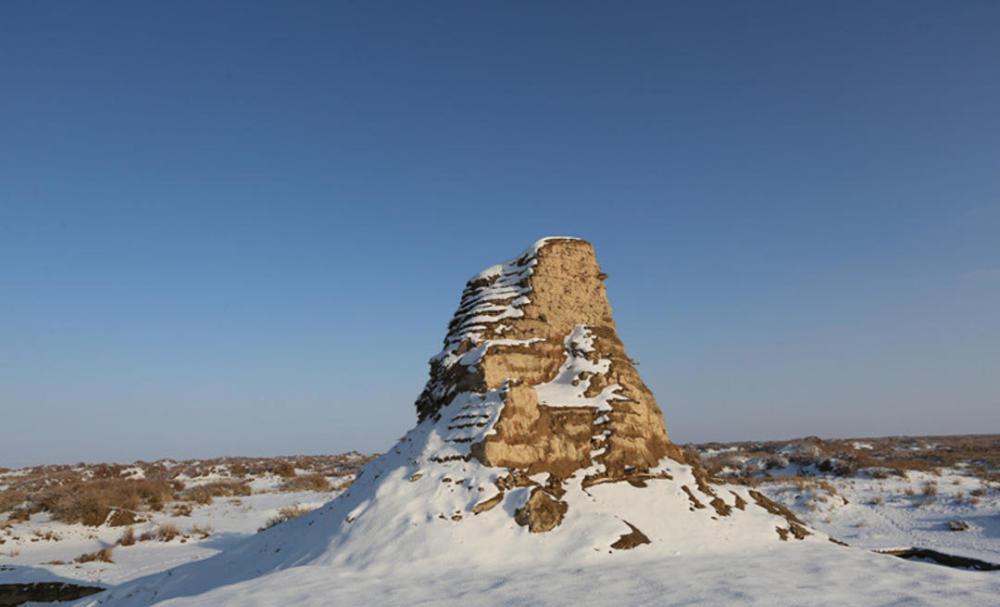Cover news reporter Zhou Qin Yan Wenwen (according to Xinjiang Institute of Cultural Relics and Archaeology)
On March 31, after a two-day on-site report and selection, the final evaluation results of the top ten new archaeological discoveries in China in 2021 were announced, and the site of Xinjiang's Yulikyak Kuduk Beacon was successfully selected.

Kjak Kuduk flint
Located in a desert no-man's land 90 kilometers southeast of Yuli County, Xinjiang, the Site of The Queyak Kuduk Beacon is one of the peacock river beacon groups of the national key cultural relics protection unit. From 2019 to 2021, with the approval of the State Administration of Cultural Heritage, the Xinjiang Institute of Cultural Relics and Archaeology conducted an active archaeological excavation of the site, with an excavation area of 2300 square meters, achieving important gains, and its results have been selected as the 2019 "Archaeological China" Silk Road Major Project Achievements and the "2020 Chinese Archaeological New Discoveries".
What is the value and significance of the Xinjiang Yulik Kuduk Beacon Site selected as one of the top ten new archaeological discoveries in China in 2021? On March 31, the cover news reporter interviewed Huo Wei, an outstanding professor at Sichuan University and president of the Sichuan Archaeological Society. Huo Wei explained, "This beacon site is an empirical evidence of the Tang Dynasty's Slightly Western Regions. The site of the beacon is very complete, in addition to the beacon itself, it also includes some of its outbuildings and ancillary facilities. For example, the pond that took water at that time and the road built at that time formed the overall appearance of a complete beacon site. Therefore, among the previous archaeological discoveries, it can be said that it is very rare. ”
Documents unearthed from the Kyaker Kuduk Beacon
In addition, this beacon site has unearthed a large number of living relics left by the soldiers of shubian. "These relics of life include several aspects of their material life, such as the utensils they have used, the straw shoes they have worn, the straw ropes they have used, and so on. More importantly, there are many wooden and paper documents that include the aspects of their spiritual life. These paper documents reflect how the Tang Dynasty soldiers from all over the motherland who lived here under very difficult conditions managed to maintain this emotional connection with their hometown and the Central Plains. For example, there are family letters written by these soldiers. We all know this poem: 'The beacon fire lasts for three months, and the family letter arrives at ten thousand gold', and from these documents unearthed from this beacon site, we can really feel the historical scene at that time. ”
Wooden Jane unearthed from the Koyak Kuduk Beacon
In addition, among the wooden jian and documents unearthed from this beacon, there are also many main routes of the Silk Road, as well as some important strongholds of town guard, such as newly discovered Yulin Town, Tonghai Town, Cover Ear Guard, Hengling Beacon, Yiquan Gupu and other military facilities, as well as new defensive routes such as Loulan Road, Maze Thief Road, yanqi Road, etc., filling the gap in the historical literature about the defense system of Yanqi Town, one of the four towns in Anxi in the Tang Dynasty. In Huo Wei's view, this is a very important material for us to understand the effective management of the Western Regions by the Tang Dynasty and the mutual exchanges between various ethnic groups.
Huo Wei revealed that in this review, from the initial evaluation to the final evaluation, he has always supported this project, "I am also very happy that it can be selected." I would also like to take this opportunity to congratulate our colleagues in Xinjiang on their achievements in this regard. ”